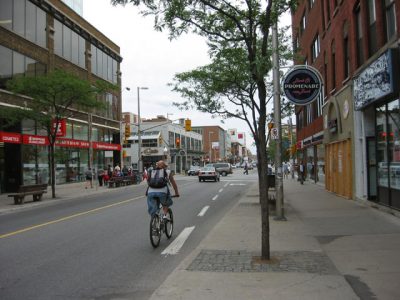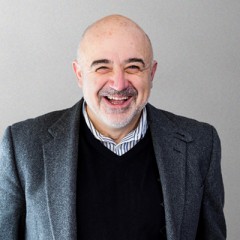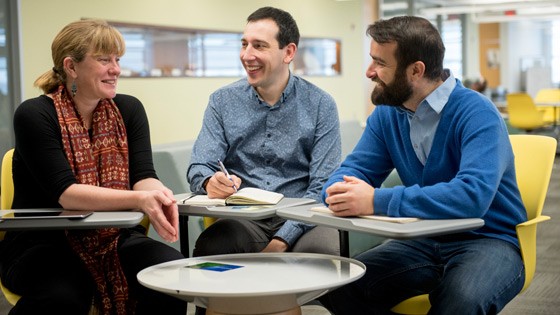by Colton Brydges, Ottawa CCE Brokering working group RA

A view of Bank Street, Ottawa.
A city like Ottawa presents so many opportunities and challenges for people or groups who want to promote social change. There are countless government departments, 3 universities, 2 colleges (and even more in Gatineau), and third sector organizations of all sizes and functions, from large international development NGOs to local community garden groups. This rich cast of actors presents a wealth of expertise and passion for social change, but also very real challenges: who do you speak to, and how do you bring everyone together?
This is the challenge that the Ottawa Community-Campus Engagement (CCE) Brokering working group is trying to address. The hope is to draw together people who are passionate about opening up new opportunities for collaboration around issues of sustainability and the environment. The intention is to develop a CCE broker to help to bring stakeholders together and build constructive linkages.
Of course, the idea of bringing different groups together for a common purpose is nothing new. In order to provide something that is useful and innovative, it is essential to consider past experiences around brokering in Ottawa. One example that is very familiar at CFICE is the Community-Based Research Network of Ottawa (CBRNO).
The CBRNO was formed in 1999 and ultimately was dissolved in 2010. The key figures in bringing this network together were Bessa Whitmore, academic co-lead for the Ottawa CCE Brokering working group, and Tim Simboli, Executive Director of the Canadian Mental Health Association and member of the CFICE Steering Committee.

Tim Simboli is a member of CFICEs Steering Committee and the Executive Director of the Canadian Mental Health Association.
According to Dr. Simboli, “[The CBRNO] was designed to bring academics and practitioners together to do research, and it had a very specific role for brokering. It lasted for about 10 years. It did some really good things, developed some papers, with some good people involved.”
Professor Whitmore recalls that the CBRNO initiated two symposia. “The first in 2002 brought together practitioners, community-based organization staff, and government people, especially at the municipal level. The second one was in 2004, with Keynote speaker Randy Stoecker.” The CBRNO also sponsored many ‘lunch and learn’ sessions over the years on many topics related to community-based research, and delivered a number of papers at conferences, including two at CUExpo in 2005 and 2008.
According to Professor Whitmore, “[The CBRNO] worked closely with the Social Planning Council of Ottawa, and United Way. It was a demonstration project for VSERP (Voluntary Sector Evaluation Research Project), a SSHRC funded community-university research alliance.”
While the CBRNO was able to do some important work in the Ottawa community, it was unable to sustain itself beyond March 2010. According to Dr. Simboli, there were a number of reasons for its demise. “In the end it just didn’t have enough support to sustain it. The funders just couldn’t get their heads around it and give money to it. I mean they have competing priorities as well. So we couldn’t get funding for it. It had to run off volunteer labour. It had to run off the corner of everyone’s desk, and people would come and go.”

Bessa Whitmore is one of the Academic Co-leads of the Ottawa CCE Brokering Working Group.
Similarly, Professor Whitmore points to the limited funding as an issue, which finally ran out in 2010. “The funding we did get was minimal, so staff were mostly limited to organizing meetings, activities, etc.,” she said. Professor Whitmore also indicated the lack of general support from post-secondary institutions as contributing to the demise of the CBRNO.
Given the experiences at the CBRNO, it is important to think very carefully about how any new brokering project will be sustained. As Dr. Simboli recalls, “It’s difficult on both sides to maintain… Brokering is kind of an amorphous function. It’s being a deal maker; it doesn’t seem to have a lot of tangible qualities about it. So it [is] a fairly hard sell. And you’ve got all the pressures in the academic world and all the pressures in the community world, and you have to compete for that attention.” To Dr. Simboli and Professor Whitmore, it is clear that a potential brokering network must define its usefulness to possible funders.
One key difference between the CBRNO and the brokering initiatives at CFICE is the thematic approach that is being taken. The Ottawa brokering group is looking to organize around environmental issues, while a national brokering effort is also being undertaken around food sovereignty by the Community-Academic Collaborative for Food Sovereignty. Taking this thematic approach will hopefully help to more clearly define and engage the stakeholders, as well as take advantage of passionate champions.
Dr. Simboli feels this approach may help to avoid some of the issues that faced the CBRNO. “Where partnerships between community and university work really well is where you’ve got champions on both sides: People who really want to bring the academic world–research, vigor, knowledge mobilization and all those things–they really want to bring that in a very generous way. And agencies want to bring their experiences, their passion for their work that they’re doing, and they want to bring that to the academics and have the academics help and support that.”

(Left to right) Carleton professor Patricia Ballamingie, Jason Garlough of the Ottawa Eco-Talent Network, and doctoral research assistant Michael Lait are an example of a successful community-campus partnership developed by CFICE. (Justin Tang Photo)
Dr. Simboli feels that the key to getting these kinds of champions is a lot of passion. “Because [CBRNO] just took the broad umbrella of ‘let’s get the community and universities together on every and any topic,’ we actually didn’t have the drive needed to do specific things,” he says. Finding people who can justify the importance of a brokering network, especially to funders, requires tapping into people’s abilities around causes that are close to their hearts.
There are clearly opportunities to make CCE brokering in Ottawa a reality. The needs assessment that the working group has been undertaking has revealed a clear desire for community groups and post-secondary institutions to collaborate for mutual benefit. However, there are considerable challenges to address as well: funding, limited time, power imbalances, and clear role definition.
The rise and fall of the CBRNO provides a meaningful example to consider, and those experiences can inform the future of CCE brokering in Ottawa.